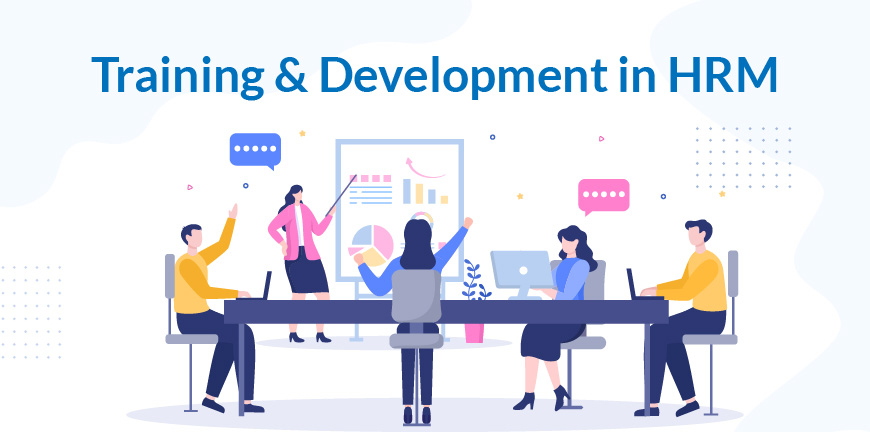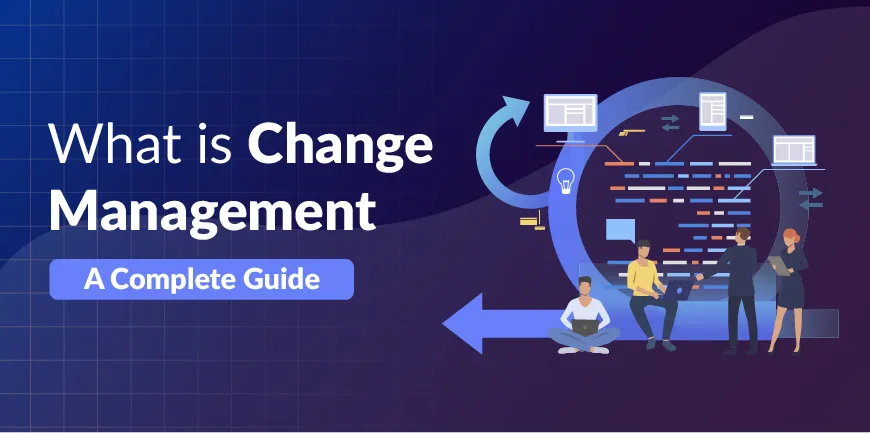
The Rise of Tech Jobs in Japan: A Gateway for Indian Engineers
15/09/2025
What Makes a Good Manager? 11 Qualities to Lead Successful Teams
19/09/2025Training and Development, although different, are usually clubbed together as they both play an essential role in an employee’s career development and in achieving organisational goals. Training focuses on honing or enhancing skills that an employee already possesses, while development focuses on developing new or hidden skills of employees. Understanding the difference between training and development is the need of the hour to ensure employees are not just skilled to perform in today’s role but can also handle new opportunities and role developments of the future.
What is Training?
Training is a process implemented in organisations to help employees hone their existing skills and acquire new skills they need to perform their current jobs effectively. Some of the ways employees receive training are through workshops, seminars, online courses, and classroom training sessions. Some examples of types of training could include compliance training, soft skills and technical skills development and onboarding for new hires.
What is Development?
Development is an ongoing process that helps employees enhance their skills and knowledge, even learn new skills to be ready for their future career growth. While training and development both seem similar in their scope, development, unlike training, which focuses on boosting skills required for the current job, is more about acquiring new skills, both technical and soft skills, leadership skills and more to adapt to the changing business environment.
Key Differences Between Training and Development
| Aspect | Training | Development |
| Purpose | Help employees hone their skills to do their best in their current role. | Nurtures employees to be prepared to perform well today and be skilled for future opportunities. |
| Scope | Narrow, job-specific, immediate needs | Broad, holistic, long-term career growth |
| Duration | Short-term, often a single event or short program | Continuous, ongoing learning and growth |
| Focus | Skills and knowledge | Competencies, leadership, attitude, and behaviour |
| Outcome | Perform and excel at their existing job role. | Equipped with soft skills and technical skills to perform now, as well as in future roles. |
| Methodology | Through workshops, seminars, classroom training sessions, and online courses. | Coaching, mentoring, job rotations, and stretch assignments |
| Audience | New or existing employees needing specific skills | All employees for sustained career development |
| Measurement | Usually measurable, skill tests, and assessments | Qualitative growth, potential realisation |
Employee Training and development is an ongoing process where companies help or train their employees to acquire the knowledge and skills needed to perform better at their job roles, as well as reach their full potential and give their best performance. Training employees is teaching them how to perform a specific task or procedure. It is focused on short-term gains—enabling employees to become better at their current jobs.
Why Both Training and Development Are Important
Implementing both training and development programs is essential for employee satisfaction, better performance, succession planning, employee retention and overall productivity of the organisation.
1. Address skill gaps
While employees may understand how to perform in their job roles, they may not know how to do it best. Reason? Underdeveloped skills. When organisations realise they are lacking and implement training and development programs, it can help close these skill gaps.
2. Optimising employee potential.
Hosting training and development programs regularly helps employees take part in them and brush up on their skills and learn them better, leading to optimised performance. These sessions help employees work at their maximum potential.
3. Increases employee satisfaction
Having training sessions and encouraging employees to attend them makes them feel valued within the organisation. This not only increases their loyalty but also motivates them to learn and perform better in their roles.
4. Better organisational productivity
A skilled workforce is what is required for an organisation’s success. If an organisation is to succeed, its employees must excel, and for that, they must possess the right skills and knowledge. Organising training sessions often helps employees stay updated.
5. Motivate employees
If an employee is feeling demotivated at work, there is a considerable chance that it’s because they are feeling insufficient. By providing them with training and development sessions that are specific to the skills, they’ll start feeling more confident and motivated to work.
6. Higher client satisfaction
Training and development enhance employees’ skills and abilities. This helps perform their tasks better, which means there are better outcomes. And when the quality of work shows, clients automatically start believing in the brand.
7. Gives organisations a competitive advantage
The changing business environment has led organisations to adapt to new technologies, refine their existing strategies, and develop better and innovative ideas. To do this effectively, employees must understand and implement these technologies. For this, having the proper training and development sessions in place is essential.
8. Paves the way for future leaders
Development programs help employees not just hone their current skills but also learn future skills and other qualities that can help them emerge as leaders. Succession planning becomes much easier for organisations.
9. Retention of employees
Hiring the best employees isn’t enough. Providing them with opportunities to excel is equally essential. And the right training programs can make this happen. This leads employees to feel valued, motivated and encourages them to stay.
10. Career advancement
Training and development programs help employees advance their careers and enhance their skills. Along with skills, they also gain confidence to take on more responsibilities in their jobs. And taking more responsibilities usually means they are ready to go to the next job level.
Current Trends in Training and Development
What employees require is growth and development opportunities; the lack of which compels them to leave the organisation. Approximately 32% of employees opt for career advancement or promotion opportunities.
Leveraging the latest trends in learning and development is, therefore, the need of the hour. The last few years have witnessed a tremendous change in training and development techniques.
1. Artificial intelligence
Artificial intelligence solutions have gained importance in all industries. This has led companies to adopt AI methods. AI in training and development means higher automation and personalisation.
With the help of algorithms, AI-based learning platforms can perform data analysis, measure ROI, and share recommendations based on users’ previous interactions with the tool. An AI-based learning tool can also share tailored training plans and resources for individual employees.
2. Personalised training
Personalised training programs can help address employees’ learning needs and deliver better productivity outcomes. Hence, L&D teams are designing training modules with targeted objectives and milestones that an employee is expected to achieve. Personalised programs can provide employees with the right resources that help enhance their skills and efficiency.
3. Needs-based training
Employees lately have been choosing self-learning courses on online learning platforms. To facilitate this in companies, L&D teams can survey to determine the skills employees wish to learn. They can conduct workshops or create online training modules for the same.
4. Gamification
Gaming techniques in employee training programs! Sounds interesting. Employee training programs can be gamified by introducing leaderboards, providing badges/certificates as a token of recognition, and offering reward points when employees complete a level in the course module, among other methods. This could lead to increased participation, motivation and eventually productivity.
5. Augmented Reality
Augmented Reality incorporation into training programs can generate a remarkably high engagement among employees. With this technology at hand, employees can be provided with an in-depth understanding of a product.
For example, sales professionals can see an augmented version of their product, which they can rotate and zoom for a better view.
6. Experiential Learning
This is nothing but learning by applying techniques employees have learned in real-world situations, relevant to their jobs. Simulations, training, and role-playing are prime examples of experiential learning, where employees work on hypothetical yet real-world scenarios and devise logical solutions to mitigate problems.
7. Microlearning
Businesses have become more and more mobile-oriented in recent years. This has given way for microlearning to be of interest. Creation of short-knowledge notes to address the immediate learning needs of employees and making them available at their fingertips at the right time makes this method important.
8. Mobile learning apps
With more and more people spending an enormous amount of time on phones, mobile apps have gained importance. And one that can be used explicitly for employee training can be very useful. It can help make your training program more engaging and interactive. By making the training content available on apps, employees can access it anytime they want on their smartphones and tablets.
9. HTML5 Replaces Flash
HTML5 is more advanced and better equipped at supporting various multimedia elements. Flash could not meet the mobile demands of modern businesses, whereas HTML5 could provide both mobile and desktop users with the same interactive experience.
Conclusion
Training and development often roll together, and while they are similar concepts, they serve different purposes. Understanding the differences between training and development and implementing them ideally can be instrumental for organisations.
Training equips employees with skills and knowledge they need “NOW”, and development prepares them for the long run, by instilling current and future skills that can position them as tomorrow’s leaders. Both are important. Organisations must have employees who know how to perform their best in their current roles.
However, they also need individuals who have the potential to take on higher positions in the organisation as it grows.
Frequently Asked Questions
1. What role does HR play in training and development?
The HR is responsible for assessing needs, crafting programs that can address the skill and knowledge needs of employees, managing resources, checking on how effective the programs are, encouraging employees to take up these programs and learn skills to perform their best.
2. Why is it important to understand training vs development in HR?
It’s necessary to understand training vs development in HR to make sure that your employees’ skills, knowledge and performance align perfectly with organisational goals. It helps HR curate programs that can boost employee performance and productivity.
3. How does employee development help in long-term career growth?
Employee development cultivates a culture of growth and ambition, where individuals are encouraged to seek out opportunities to better themselves and, in turn, contribute more effectively to their teams and organisations.
4. What are the key objectives of training in HRM?
The objectives of training in HRM include enhancing employee skills and knowledge, improving job performance and productivity, boosting employee motivation and engagement, reducing employee turnover, and fostering a positive work culture.
5. What are the main goals of employee development?
The primary objectives of employee development encompass acquiring new skills, refining existing workplace skills, assuming leadership responsibilities, expanding professional networks, upgrading credentials, and pursuing courses that enhance their knowledge.
6. What is the importance of training and development in HRM?
Training and development programs identify and nurture high-potential employees for future leadership positions. Organisations can ensure a pipeline of capable leaders who can drive the company’s growth, make strategic decisions, and boost productivity. It also ensures continuity, stability, and efficiency, which is vital for an organisation’s stable growth.
Contact Us For Business Enquiry

Suresh Ramkrishna
Suresh Ramkrishna is the Operations Manager at Alp Consulting Ltd., with over 30 years of extensive experience spanning recruitment operations, sourcing, supply chain management, and client relations. At Alp, he leads the Search & Staffing Practice, specializing in bilingual and niche skill hiring while overseeing Japanese language and TITP (Technical Intern Training Program) initiatives. He also manages NAPS (National Apprenticeship Promotion Scheme) training programs, fostering skill development and workforce readiness across industries. Previously, he spent over two decades in the apparel export industry, managing vendor development and international sourcing for top global brands. Suresh’s leadership blends strategic talent acquisition with operational excellence across diverse industries.




